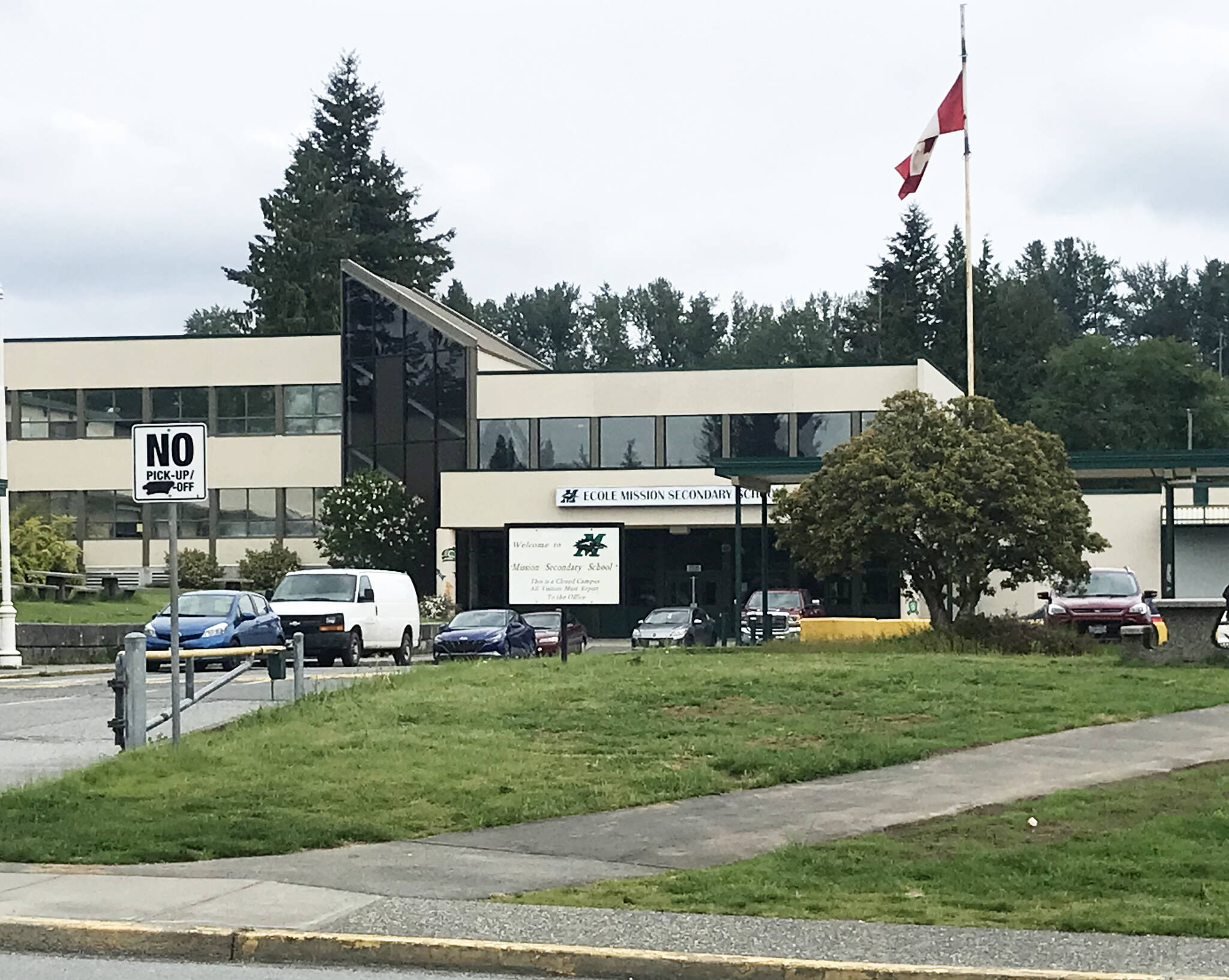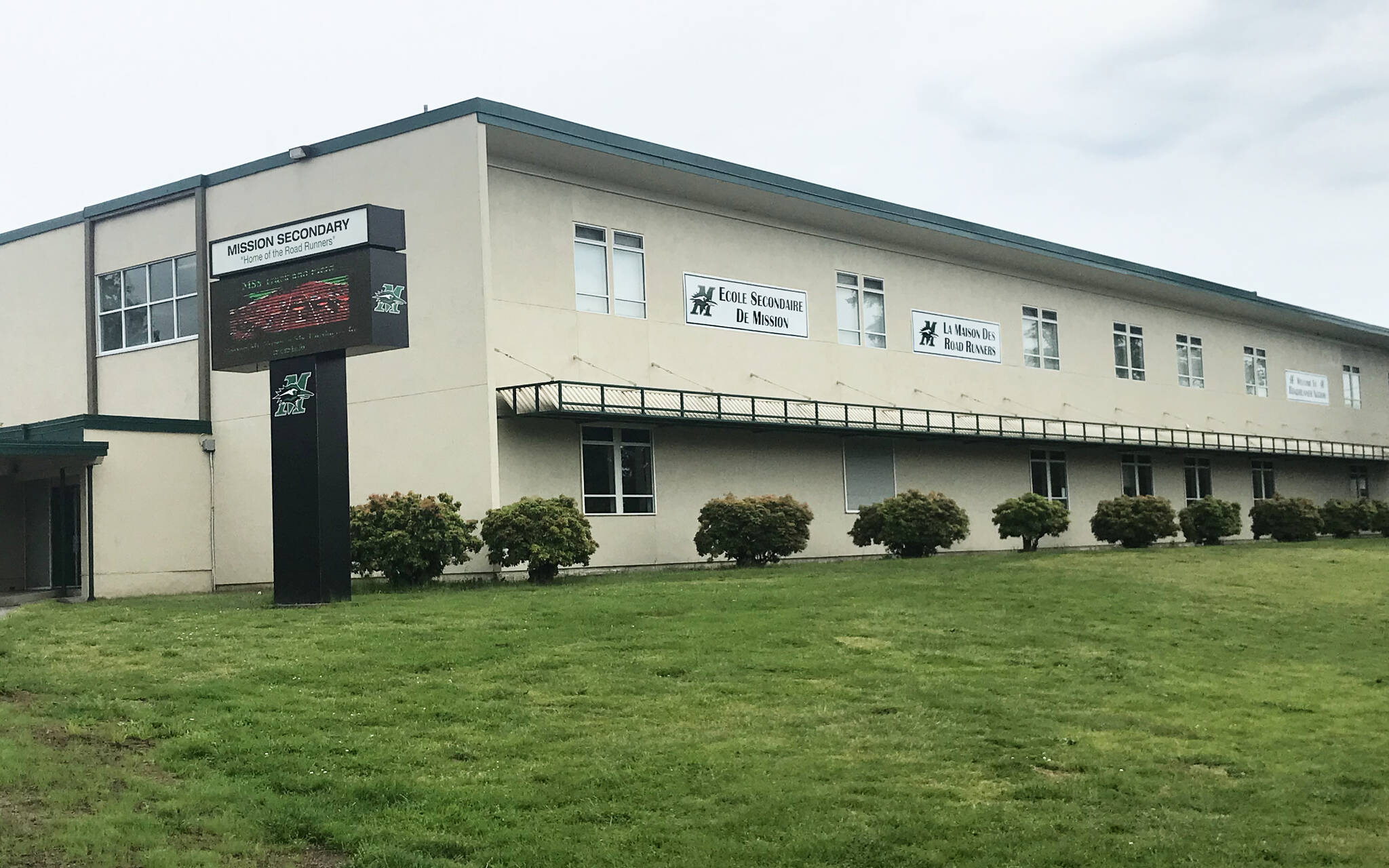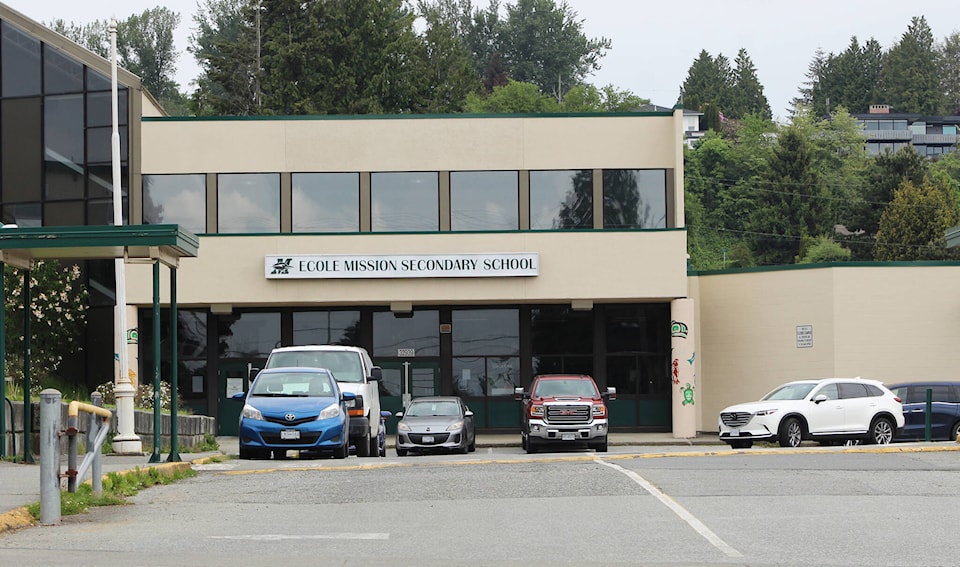[UPDATE: The original story stated a two-year freeze had been placed on all new school projects; the ministry says this is not accurate. The Record had specifically asked the ministry to elaborate about a “2-year delay” mentioned in an SD75 agenda, but it was not addressed. We asked the same question to the superintendent, who said it referred to all new school projects.]
…
The overcrowded Mission Secondary School won’t be replaced for at least another six years. The Ministry of Education has removed the $87-million election promise from its list of approved capital projects.
Last month, the Mission School District received formal notice from the ministry that a delay has been placed on the project due to the significant capital costs of rebuilding after a devastating year of fires and floods.
While understanding of provincial budget pressures, Superintendent Angus Wilson said it’s “very frustrating” nonetheless.
“Obviously, a place like Merritt is prioritized over us. I get that,” he said. “But we were promised a full replacement for MSS.
“You’re told that you’re in the lineup to get a new school, and then you’re told you’re gonna have to wait.”
During the 2020 provincial election, Mission’s NDP candidates Pam Alexis and Bob D’Eith made a joint announcement at the high school, pledging its full replacement if re-elected.
It was due for a seismic upgrade at a cost of $66 million; the candidates said it made more sense to rebuild it for $21 million more.
RELATED: BC NDP promise $87 million for new high school in Mission if re-elected
That cost is now $114 million, according to the district’s 2022/2023 capital plan submission to the ministry, but it’s been deferred. Next year, preliminary estimates have it inflated to $125 million.
Wilson said the district spent just under $200,000 getting the proposal ready, but now they have been told to resubmit it next year.
He said the planning costs will eventually be reimbursed, but they can’t really afford to plan for other schools while “out of pocket” on MSS funding.
And the city needs three or four new elementary schools now, he said.
Last year, the district had a 3.8 per cent increase in the number of students – nearly double the provincial average – and it’s projected to add 800 more in the next decade, according to recent staff reports.
“We’ve already pretty much hit the point where we can’t really support that (growth) with what we have,” Wilson said.
The only high school is currently at 109 per cent of its capacity; the two middle schools are at 85 per cent capacity; the combined 13 elementary schools are at 87 per cent capacity. The four largest elementary schools range from 93 to 121 per cent full.
Other rejected capital projects from this year’s submission to the ministry include a $9.3 million expansion for Albert McMahon Elementary, $39 million to replace Hatzic Elementary (requires land purchase), and $23 million for a new Cedar Valley Elementary.
Further expansions for West Height Elementary and Silverdale Elementary are being planned to account for growth in those neighbourhoods, according to Wilson.
He added that a new elementary school generally costs anywhere from $10 million to $25 million, depending on its size.
While Dureau Elementary could potentially be reopened, it only has six classrooms, and the location is not where the city’s growth is occuring.
The district’s plan in the meantime: more portables and creative ways to cram in more kids.
Last year, the boys’ change room at Hatzic Elementary was converted into a support room, so the support room could be used as a regular classroom, Wilson said.
Portables have a lifespan of 15 years, Wilson said: they rot and decay, are not actually that portable (can only be moved twice), cannot be repaired, and end up costing more in the long run.
RELATED: ‘No more room to grow’: Mission School District mulls capacity-issues
What has been approved for funding over the next five years? “Small potatoes,” Wilson said.
Riverside College is funded for a $690,000 expansion, Albert McMahon Elementary and Christine Morrison Elementary are getting HVAC upgrades worth $410,000, and three new school buses are being ordered for just under $450,000.
But slow wheels on a provincial school project is not out of the ordinary, according to Wilson, citing New Westminster Secondary School’s replacement.
He said from the time it was announced, to the time of its completion, an entire generation of kids went from Kindergarten to Grade 12.
MLAs Alexis and D’Eith met with the district on May 26 to discuss the delay of MSS. In a joint statement, they said they will “advocate strongly for this project and will do everything we can to help it along.”
Wilson said if he had to guess, a hole for MSS will probably start to be dug in four or five years.
The Record reached out to the ministry with questions about a “two-year delay” (mentioned in the school board agenda), which projects are currently being prioritized, and where a new MSS sits in the lineup for new schools.
The ministry did not answer any of these questions, but said they plan to spend more than $1.2 billion for seismic upgrades and replacements at 58 schools in five years.
“We remain committed to a Mission Secondary project with seismic mitigation in future budgets.”
@portmoodypigeon
patrick.penner@missioncityrecord.com
Like us on Facebook and follow us on Twitter.


